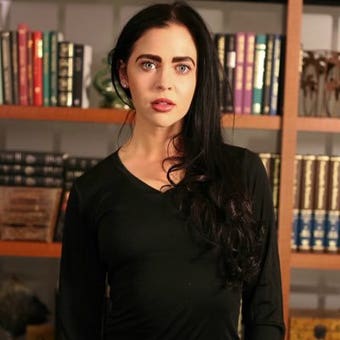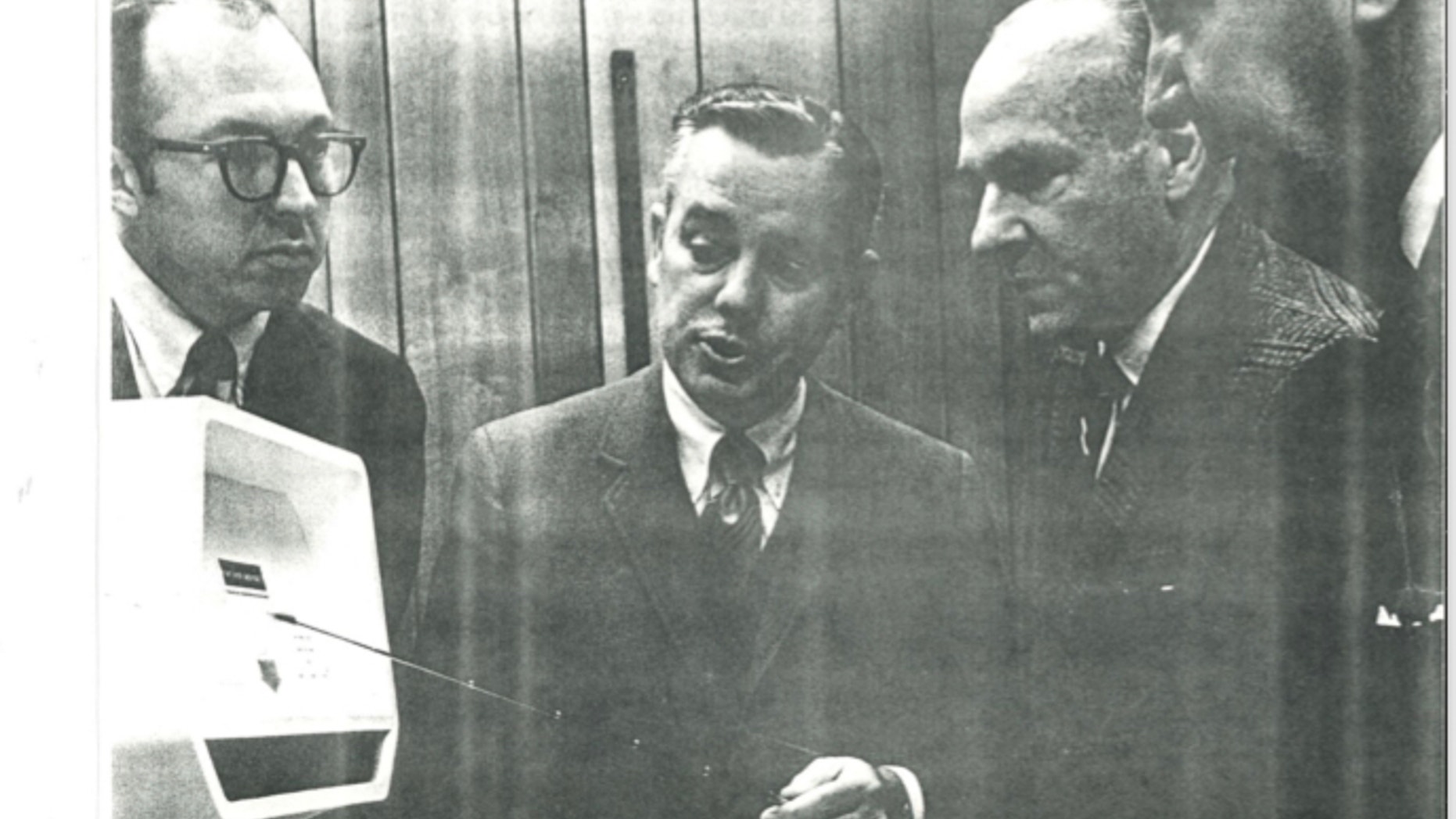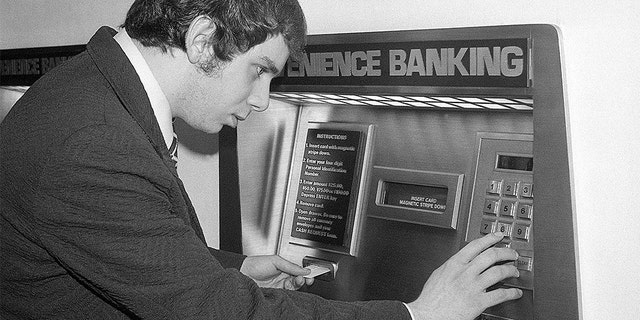https://www.foxnews.com/tech/90-year-old-inventor-atm-celebrates-its-50th-birthday
90-year-old inventor of the ATM celebrates its 50th birthday, admits wife has never used one


The first ATM was unveiled in the United States in Nassau County, Long Island in 1969 (Wetzel Family)
It was a cool Friday afternoon in 1968 and businessman Donald Wetzel needed money to travel before the end of the weekend.
The then-40-year-old examined the long line snaking through the bank and out the door, the clock was etching close to 5 o’clock, and his agitation was only growing.
“So much of what they were doing was withdrawals, and it struck me as I was standing in line, that there ought to be a machine that could do that,” Wetzel, who is 90, told Fox News. “And something that didn’t need the bank to be open – customers could get money 24 hours, seven days a week. I thought it would be marketable, and it turns out it was.”
And so the idea for the Automated Teller Machine, better known as the ATM, was born – and would radically change the way people all over the world conducted bank transactions, and how every financial institution functioned.
The creation took around 11 months from conception to fruition, and the first “cash box” was unveiled at a Chemical Bank branch in Rockville Centre, Long Island on September 2, 1969.
“The ATM is not a complicated machine as far as the building of it goes,” said Wetzel, who lives in Texas. “I wanted something that used a transportable card, something we could stick in our pockets. The real secret of it is the magnetic strip. The biggest obstacle along the way was finding a way to make it extremely secure, if you are going to have this machine outside a bank with hundreds of dollars inside it, we had to convince the bank that nobody was able to break in.”
YOUR PHONE IS SPYING? THE TRUTH BEHIND THE STRANGE PHENOMENON
To conquer the security quagmire, Wetzel – who had previously worked for IBM and was an engineering executive for Texas-based Docutel, which made automated baggage handling equipment – developed the concept of using the strip to hold the Personal Identification Number (PIN) number, which back then matched the PIN number printed on the card. The data was then scrambled each time the card was used, and the data rearranged.

Donald Wetzel, now 90, invented the first ATM in America fifty years ago(Wetzel Family)
“That gave us the security we felt we needed,” he said. “Then came developing a printer and device that would push out the cash and a little instrument that would give the user instructions. But the magnetic strip was the real key to the ATM’s success.”
Nonetheless, marketing his invention proved far from easy. For the first years, Wetzel took on the role of lead salesman. He went door-to-door to pitch the product to bankers. Nearly every single one laughed in his face.
“People thought I was nuts,” he said with a chuckle. “They would say ‘You mean a cash machine that anyone could just walk up to and use? I don’t think so. We have tellers who do that.’ Then I had to explain why I thought it would be of great value to their customers.”
People thought I was nuts. They would say ‘You mean a cash machine that anyone could just walk up to and use? I don’t think so. We have tellers who do that.’ Then I had to explain why I thought it would be of great value to their customers.— Donald Wetzel, inventer of the ATM, on the reaction he got from bankers when he proposed the machine
Within just a few years, the functions of the ATM expanded to produce account balances for customers and, as computer technology burgeoned, the ATMs went online.
“The 24 Hour Chemical Cash Machines Are Here! Now you can get cash all around the clock,” boasted the early 1970s advertisements for Chemical Bank. “Right around the corner.”
Today, there are some 3.5 million ATMs installed across the world.
“Frankly, I am surprised that the machine we initially conceived of making basically has the same functions as it did back then. Sure, it is faster and looks better now,” Wetzel said. “But it gives me a great deal of pleasure because I think we really did our homework.”

(Original Caption) 6/7/1976-New York, NY-: Banks across the nation are abandoning their old image and their bricks-and-mortar concept of doing business, and are trying to lure new customers with push-button banking. Using a coded plastic card in the computerized teller machine such as this one in Grand Central Station, a customer can deposit or withdraw money, transfer funds, and even make a loan. (Bettmann/Getty)
Wetzel will join Nassau County officials including Executive Laura Curran, Rockville Center Mayor Francis X Murray and Chase Bank representatives including Chief Administrative Officer Reggie Chambers, next Friday, Sept. 6 to mark the momentous occasion at the place that it all began–the site of the former Chemical Bank of Rockville Center, which was later bought by JPMorgan Chase.
“The ATM revolutionized the banking industry and its impact on our economy cannot be overstated,” said Harry Coghlan, CEO of the Nassau County Industrial Development Agency, which is co-sponsoring the 50th birthday event with Chase and Nassau County. “The ATM has modernized and, like the computer, become more compact, more digital, more efficient, and safer for use.”
“We are proud that Nassau ingenuity was the ‘big bang’ that created the world of banking we know today,” Coghlan told Fox News, “and Mr. Wetzel should be known as the ‘father of 24-hour banking.’”
IPHONE HACK ATTACK: GOOGLE SAYS HACKERS PLACED ‘MONITORING IMPLANTS’ IN IPHONES
Nassau County also will be proclaiming the day in honor of Wetzel for his revolutionary design that brought the world into the realm of 24-7 banking.
These days, Wetzel leads a quiet life in Dallas, Texas with his wife Eleanor, 88.
But Eleanor will have none of his prized creation.
I am embarrassed to say, [my wife] has never used an ATM. ..she was scared she would put her card in the machine and she would never get it back. She never had the desire to use one, and she never changed her mind.— Donald Wetzel, on the one person he couldn’t win over with his invention
“I am embarrassed to say, she has never used an ATM,” Wetzel conceded. “At the time, Eleanor was busy being a mother and she was scared she would put her card in the machine and she would never get it back. She never had the desire to use one, and she never changed her mind.”
He still co-owns the patent for the ATM, which is archived with the Smithsonian Museum, which few in his community know.
“A couple of days ago, I stopped by the post office to ask them to hold my mail while I travel to New York to celebrate the 50th anniversary of the ATM,” Wetzel said. “The clerk asked me what I had to do with the ATM and I told him I invented it. Well, he let out the loudest scream. It had everyone wondering what was going on.”
While the ATM has sustained the American banking system for a half-century, its future in the ever-changing financial climate is subject to debate.
“It used to be a very convenient way to pull out cash, and it is still very popular with the baby boomer generation. However, due to technology, most millennials don’t even know their PIN number. The new ATM is in our pockets,” quipped Alexander Joyce, CEO and president of income planning firm, ReJoyce Financial. “Your phone, through applications, does most of the functions your bank can.”
Investment advisor Clayton Alexander, however, firmly believes that the ATM is here to stay.
“Since the ATM was introduced in 1969, major strides and technological advances have occurred in the banking industry,” Alexander said. “Through all of it, the ATM has and will continue to be relevant. Even though time goes on, spending money will continue to become easier and the speed of transactions will increase, there will always be those that prefer to continue transactions via cash.”Hollie McKay has a been a Fox News Digital staff reporter since 2007. She has extensively reported from war zones including Iraq, Syria, Yemen, Afghanistan, Pakistan, Burma, and Latin America investigates global conflicts, war crimes and terrorism around the world. Follow her on Twitter.